General Atomics A2LE experimental UAV
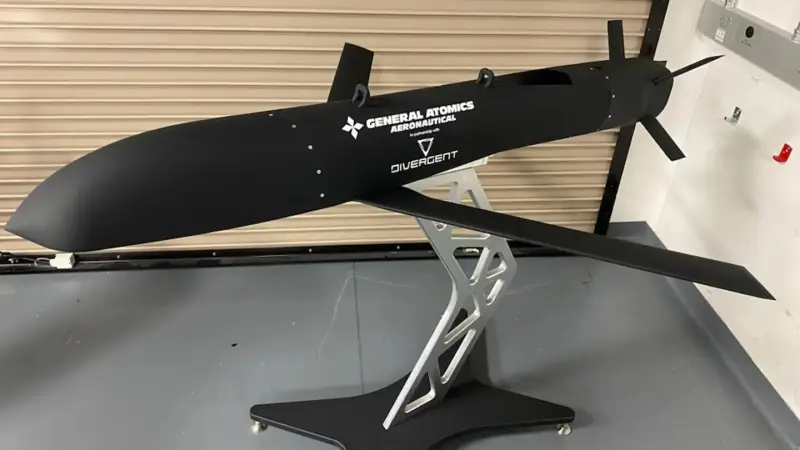
Experimental UAV A2LE in flight configuration
General Atomics Aeronautical Systems, Inc. (GA-ASI) together with contractors is actively developing a new idea in the field of unmanned aviation. Experimental designs for medium-sized UAVs suitable for use as payloads for larger, heavier systems are being proposed and developed. Several samples of this kind have already been brought to testing, and based on the accumulated experience, a drone has now been created with the working designation A2LE. Recently it also entered flight tests.
Results of cooperation
In 2022, GA-ASI entered into an agreement with Divergent Technologies to provide the Divergent Adaptive Production System (DAPS) hardware and software package. This complex creates a unified digital environment in which it is proposed to develop and produce new products. In addition, the complex allows you to work with a wide range of production technologies, including the newest and most promising. DAPS has previously been tested in the automotive and other industries, and General Atomics has begun introducing it into the aircraft industry.
GA-ASI planned to use the DAPS complex in the development of a series of small and medium-sized UAVs (Small Uncrewed Aerial System - SUAS), intended for use with larger drones carriers. This area as a whole received the designation “Air-Launched Effects” (ALE).
The first UAV from the SUAS / ALE series, called Eaglet, was developed, built and tested in 2023. Subsequently, several more similar samples with a different appearance, characteristics and capabilities were announced, shown and/or brought to testing. During each such project, certain ideas were worked out and other activities were carried out.
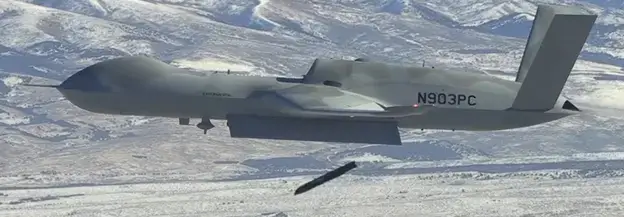
MQ-20 drops A2LE product
Based on the accumulated experience, the A2LE (Advanced Air-Launched Effects) UAV project was developed last year. No later than October-November, the first experimental drone of this model was manufactured and sent for testing. By the end of November, the product passed the necessary tests on the ground and was prepared for full flights.
On November 28, the first flight of the new A2LE product took place at the Dugway test site (Utah). The heavy multi-purpose vehicle MQ-20 Avenger, also developed at GA-ASI, was used as a carrier for the experimental UAV. The prototype drone was placed in the internal cargo compartment of the carrier. The two UAVs rose together to a predetermined altitude, after which the small A2LE left the holder and began flying independently.
The development company has not yet disclosed details of flight tests of the A2LE product. Official reports claim that the flight was successful. At the same time, they made do with only the most general formulations about the great significance of the first flight and the project as a whole, its prospects, etc. It is hoped that GA-ASI will continue to release new messages and share information as it continues development and testing.
Experimental look
The A2LE UAV is actually intended to test various technical and production solutions, and can only be considered as a technology demonstrator. All this affected the technical appearance of the product and its various features. In particular, the drone received a full-fledged airframe, propulsion system and control system, but the presence of target equipment on board has not yet been reported.
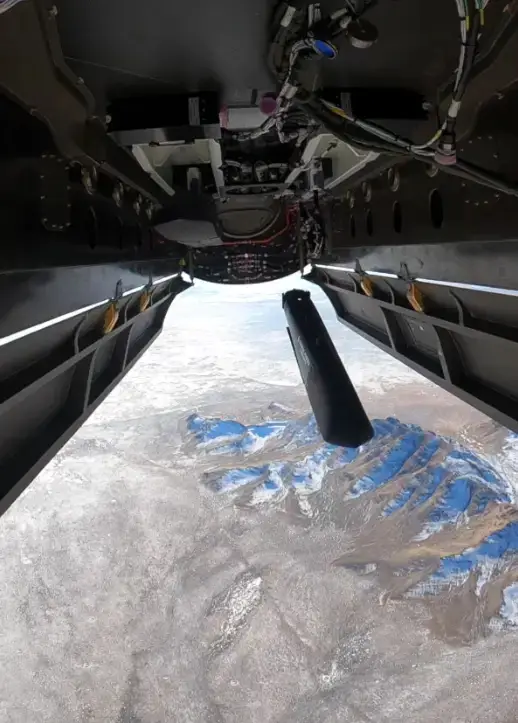
Dropping an A2LE UAV from an MQ-20 cargo bay. The second device remains on the holder
The A2LE design involves the use of modern materials and technologies. In particular, metal and plastic parts made by XNUMXD printing are widely used. This technology made it possible to optimize the production process. In addition, by increasing the complexity of the shape of individual elements, high technical characteristics are achieved.
Externally, the A2LE UAV is similar to some other aircraft-type drones or a cruise missile. It is built in an elongated body with a characteristic shape with smooth curves and sharp edges, indicating reduced visibility. There is a folding wing in the central part of the fuselage, and rudders in the tail. The exact layout of the internal volumes is unclear. We can only speak with confidence about the rear placement of the turbojet engine.
Dimensions, launch weight, payload and other parameters of the A2LE remain unknown. Flight characteristics are also not disclosed. Judging by the available data, the length of the product should not exceed 1,5-2 m, and the weight is within tens of kilograms. In general, the size and weight of the UAV is similar to some modern aircraft munitions. The design indicates subsonic flight speeds, perhaps up to 0,8-0,9 Mach.
At this stage, the experimental A2LE should have an autopilot and a remote control system. To practice flight on the carrier, separation from it, etc. Just these functions are enough. However, in the future more complex tests may begin, which will require reconnaissance devices, etc.
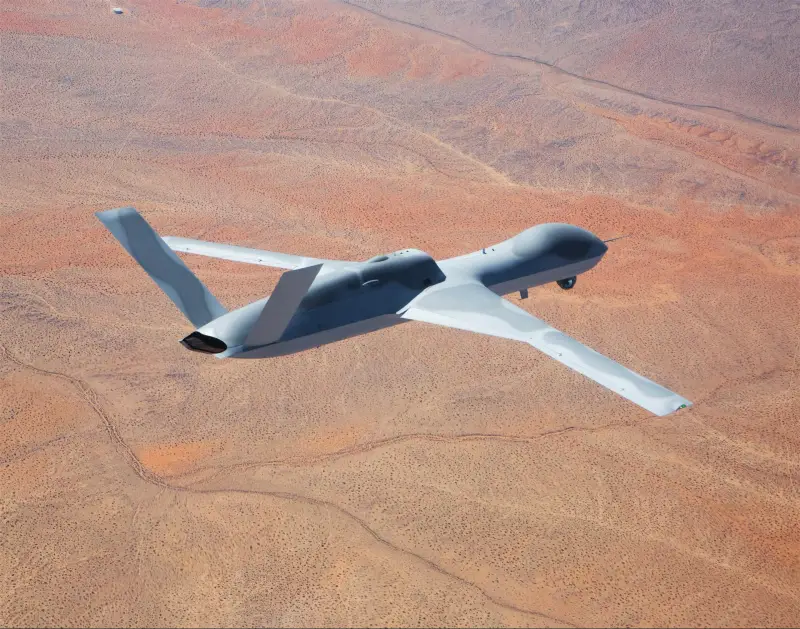
MQ-20 in flight
During testing, the A2LE carrier is a heavy MQ-20 UAV. The device is placed in the internal cargo compartment or, possibly, on an external sling. In the case of internal deployment, Avenger takes on board at least two A2LEs. Standard beam holders designed for standard weapons are used.
Perhaps the A2LE project will not be limited to just resetting from the media. Previously, GA-ASI presented a system for returning small UAVs to a larger carrier. To do this, it is proposed to lower a cable with a load from a large drone, and a small device must catch it with a special grip. The carrier will then reel in the cable and pull the SUAS/ALE inside the cargo bay.
Promising solutions
The main goal of the current ALE and A2LE projects is to create and test technologies for the joint use of UAVs of different classes. At the same time, lighter and more compact drones are being developed from scratch - they must meet the characteristics and limitations of their carriers. To date, GA-ASI has presented several such projects, and is now testing finished equipment, gaining the necessary experience.
The interest in the topic of unmanned systems with a heavy carrier and smaller UAVs on board is quite understandable. Such an aviation system has a number of characteristic advantages that can be used in solving various combat and auxiliary tasks. With its help, the capabilities of the tactical component of the Air Force can be significantly improved.
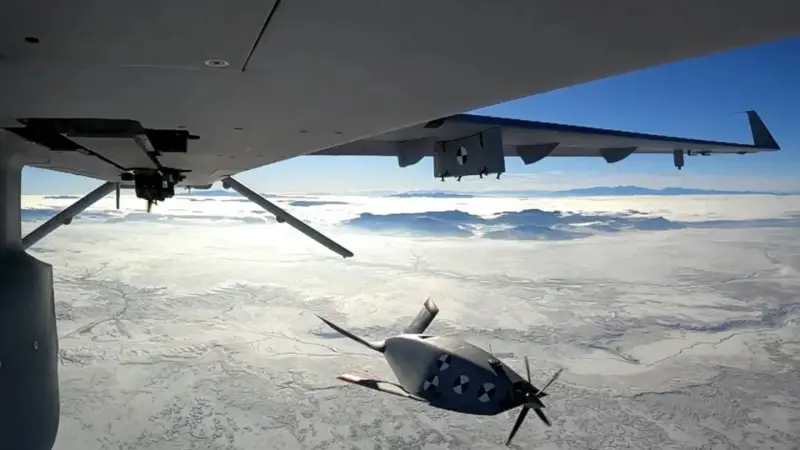
MQ-1C and Eaglet small UAV
A small UAV flying on board a carrier can solve various problems. It can be equipped with optical or radio equipment for reconnaissance. Also, in theory, it is capable of carrying some weapons or means of countering enemy air defenses.
A system with a carrier drone and a drop/return small UAV should show an increased combat radius. The presence of several small devices allows the system to work more actively - to reconnaissance or attack several targets simultaneously. In addition, simpler and cheaper small devices can be sent to a dangerous area, while a large and expensive carrier will not be exposed to risks.
Future family
In general, the SUAS / ALE concept has its advantages and is quite capable of being used in practice. The only question is the timing of completion of the current stage of research and experiments, as well as the subsequent appearance of combat-ready vehicles and systems based on them. If current work on the A2LE topic continues without unexpected problems and difficulties, then a ready-made system of this kind will be able to enter service within the next few years.
It is curious that not only a UAV based on the current experimental A2LE, compatible with the heavy MQ-20, can enter service. Previously, GA-ASI developed several similar drones for use on other types of carriers. All these projects can be developed, and this will lead to the formation of a whole family of unmanned systems based on common principles and with different characteristics.
Information